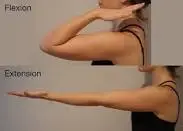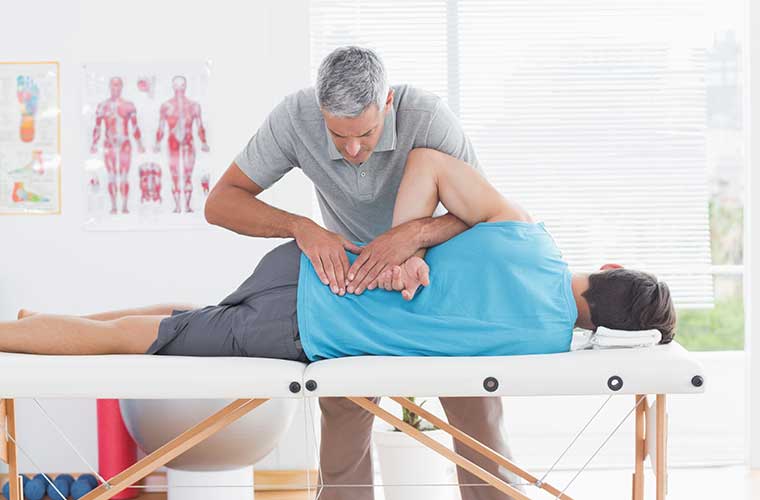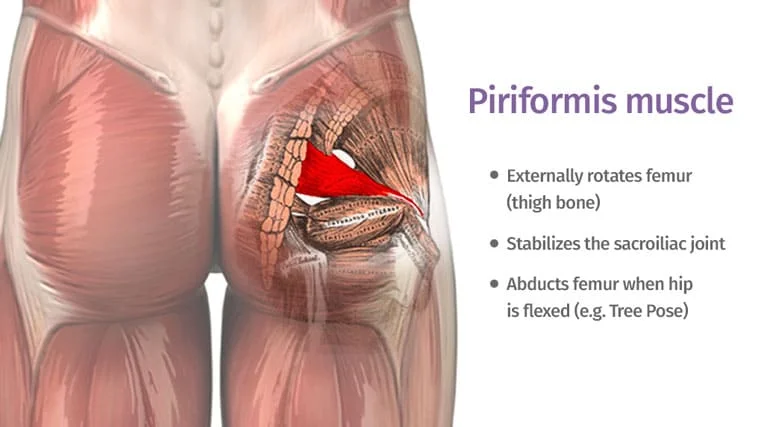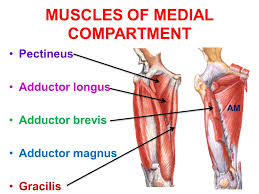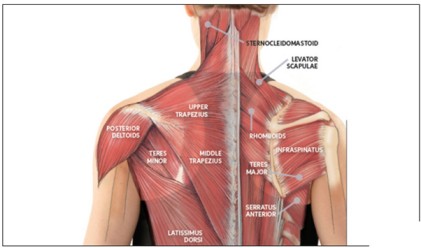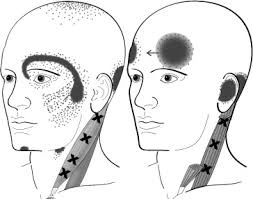Elbow Flexion and Extention
Elbow flexion and extension refer to the movements that occur at the elbow joint, allowing for bending and straightening of the arm. These movements are essential for various activities involving the upper extremities, such as reaching, lifting, and throwing.
Table of Contents
Elbow Flexion
What is Elbow Flexion?
- Elbow flexion refers to the bending or movement of the elbow joint that brings the forearm closer to the upper arm. It is one of the main movements of the elbow joint and is essential for various daily activities and exercises.
When the elbow is bent, the angle between the humerus (upper arm) and the forearm decreases. This movement is facilitated by the contraction of the muscles in the front of the upper arm, namely the biceps brachii and the brachialis. These muscles work together to generate the force needed to bend the elbow. Elbow flexion is involved in many daily activities, such as lifting objects, putting food in the mouth, and tasks that require bending the arm at the elbow. This is also an important movement for exercises that target the biceps, such as bicep curls or chin-ups.
The elbow joint is a joint formed by the articulation of three bones: the humerus (the bone in the upper arm), the ulna (the bone on the inside of the forearm), and the radius (the bone on the outside of the arm). The main muscles responsible for bending the elbow are the biceps and brachial.
The brachial is a two-headed muscle located on the front of the upper arm. It originates from the scapula (scapula) and enters the radius. The shoulder girdle muscle is located under the biceps muscle and originates from the front of the humerus and is located on the ulna bone. These muscles work together during elbow flexion to contract and generate the force needed to bend the elbow.
Elbow flexion occurs in various activities, such as lifting objects, doing bicep curls, throwing a ball, or bringing food to the mouth while eating. It is also an important strength training movement that targets the biceps and upper arm muscles. Exercises such as biceps curls, hammer curls, and preachers can be performed using dumbbells, dumbbells, or resistance bands to strengthen and improve elbow flexion. To avoid injury and promote muscle growth, it is important to maintain proper form and gradually increase weight or resistance.
In summary, elbow flexion is a bending of the elbow in which the forearm moves towards the upper arm. This is facilitated by the contraction of the muscles in the front of the upper arm.
Elbow Flexor Muscles
The elbow flexors are the muscle group primarily responsible for the elbow flexion movement, which is the bending of the elbow joint. These muscles work together to contract and generate the force necessary for this movement. The main elbow flexors are:
- Biceps Brachii: Brachio is a two-headed muscle located on the front of the upper arm. It has a long head and a short head, both of which originate from the scapula (shoulder blade) and join to form a single tendon that attaches to the radius of the forearm. The biceps brachii is the main muscle involved in elbow flexion and also contributes to forearm supination (turning the forearm palm up). Brachialis: The brachialis is a muscle located under the biceps of the upper arm. It originates from the front of the humerus and enters the ulna of the forearm. The brachialis is a strong elbow flexor and is particularly active when the elbow is flexed against resistance or when the forearm is pronated (palm down).
- Brachioradialis: Brachioradialis is a muscle on the outside of the forearm. It originates from the humerus and enters near the wrist. Although the brachialis is not as powerful as the biceps or brachialis in elbow flexion, it contributes to this movement, especially when the forearm is in a neutral position (between pronation and supination).
These muscles work synergistically to produce elbow flexion and are often trained and strengthened through exercises such as biceps curls, hammer curls, and chin-ups. It is important to note that other upper arm and forearm muscles also play secondary roles in elbow flexion, but the above are the main contributors to this movement.
Elbow Flexion Test
The elbow flexion test, also known as the elbow flexion test, is a clinical examination used to assess a range of motion and identify limitations in elbow flexion. This is usually done by health professionals, such as doctors or physical therapists, to assess elbow flexibility and range of motion.
The elbow flexion test is usually performed as follows:
- Position: The subject should sit or lie comfortably with the arm being tested resting on a flat surface such as an examination table.
- Starting position: The elbow is initially fully extended or straightened.
- How to do the test: The examiner gently and passively bends the person’s elbow joint, slowly bending it to assess movement. Their goal is to bring the forearm as close as possible to the upper arm by measuring the degrees of flexion achieved.
- Measurement: A goniometer, a special tool used to measure joint angles, can be used to accurately measure the angle of elbow flexion. The goniometer is aligned with the lateral epicondyle of the humerus (the bony projection on the outside of the elbow) as the stationary arm and the mobile arm are aligned with the ulna bone of the forearm.
- Evaluation: The examiner notes the degree of flexion achieved and compares it to a normal range of motion. In general, the full range of motion of elbow flexion is considered to be approximately 0-150 degrees. Any range of movement limitations may be identified during this assessment.
The elbow flexion test helps healthcare professionals identify elbow contractures, which are abnormal limitations of joint movement caused by tightening or shortening of the muscles, tendons, or other soft tissues of the elbow. It is often used in conjunction with other clinical assessments to diagnose and plan appropriate treatment for conditions such as elbow arthritis, elbow injuries, or rehabilitation after surgery.
It is important to note that the elbow flexion test must be performed by a trained healthcare professional who knows how to correctly interpret the results and make appropriate recommendations based on the results.
Range of motion of Elbow Flexion
Elbow range of motion (ROM) is the extent to which the elbow bends or flexes. The normal range of motion of elbow flexion varies between individuals but is usually between 0 and 150 degrees.
Here is a breakdown of approximate elbow curves at different points in the movement:
- Full extension: When the elbow is fully extended or straightened, it is at 0 degrees of flexion.
- 90-degree flexion: When the forearm is perpendicular to the upper arm, it is in 90-degree flexion.
- Maximum flexion: Maximum flexion is usually 130-150 degrees, where the forearm approaches or reaches the biceps or humerus.
It is important to note that range of motion can vary due to individual differences, age, past injuries, and other factors. Limited elbow flexion range of motion can be caused by conditions such as arthritis, joint stiffness, or muscle imbalances. In some cases, physical therapy or rehabilitation may be recommended to improve or restore the elbow range of motion.
It is important to seek the advice of a medical professional or licensed physical therapist if you have concerns about the range of motion in your elbow, or are experiencing restrictions or discomfort, as they can do a full assessment and suggest the most suitable therapies.
Elbow Flexion Exercises
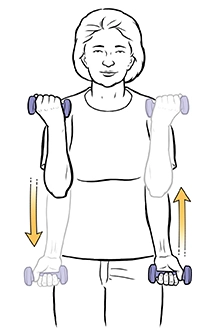
There are various exercises you can do to target and strengthen the muscles involved in elbow flexion. Here are some common exercises:
- Bicep curls: Bicep curls are a classic exercise that primarily targets the biceps of the upper arm, but also the upper arm to some extent. Here’s how to do bicep curls:
- Each person holds a dumbbell in front of them while standing or sitting. Keeping your elbows close to your sides, slowly move the weights up as you exhale. At the peak of the exercise, tighten the muscles in your arms and biceps before gradually lowering the weights. Repeat as often as you like.
- Hammer Curls: Hammer curls not only work the biceps but also stress the brachialis. Here’s how to do hammer curls:
- Stand or sit with a dumbbell in each hand, palms facing the body (neutral grip). Keep your elbows close to your sides and lift the weights up as you exhale. At the peak of the exercise, tighten the muscles in your arms and biceps before gradually lowering the weights. Repeat as often as you like.
- Preacher curls: Preacher curls isolate the biceps, supporting and stabilizing the upper arms. You can do this exercise using a bench press or incline bench. Thus:
- Sit on a curved preacher’s bench or lean on an inclined bench with your armpits against the top of the bench. Grab an EZ bar or dumbbell with an underhand grip (palms up). Slowly roll the weight up, keeping your upper arms against the bench and breathing. During the movement’s peak, squeeze your biceps, and then gradually drop the weight. Repeat as often as you like.
- Chin-ups: Although chin-ups are primarily known as a back exercise, they also effectively target the biceps. They can be done with an overhead or pull-up bar. Thus:
- Hang from the bar with the bottom handle (palms facing you) and hands shoulder-width apart. Pull yourself up by bending your elbows and squeezing your biceps. Continue until your chin is over the bar or as high as you can comfortably go. Return your body slowly to the beginning position. Repeat as many times as you want. These are just a few examples of exercises that target elbow flexion. It is important to start with an appropriate weight or resistance level, maintain proper form, and gradually increase the intensity or resistance as your strength improves. If you haven’t exercised or have specific concerns or limitations, consider seeking guidance from an exercise specialist or healthcare provider.
Special test for elbow flexion
There are no specific tests that are only designed to assess individual elbow flexion. However, there are certain specialized tests that can indirectly assess the function and integrity of the muscles involved in elbow flexion and other structures surrounding the elbow joint. These tests are often used in clinical trials to diagnose various elbow conditions or injuries. here are some samples:
- Elbow Flexor Strength Test: This test evaluates the strength of the elbow flexors. The subject is instructed to bend the elbow against the resistance of the examiner. The inspector can use resistance by hand or use a dynamometer to quantify force.
- Resisted elbow flexion test: This test is used to evaluate for possible tendinitis or tendinopathy of the biceps tendon. The subject is asked to bend the elbow against the resistance while the examiner provides resistance in the opposite direction. Pain or discomfort in the biceps area during the test may indicate pathology of the biceps tendons.
- Tinel’s test: This test is primarily used to assess nerve irritation or compression. In relation to elbow flexion, the ulnar nerve is most commonly assessed. The examiner lightly touches the ulnar nerve in the medial aspect of the elbow while the subject flexes the elbow. Pinching or electric shock-like sensations in the distribution of the ulnar nerve may indicate entrapment or irritation of the ulnar nerve.
- Commodity/Mild stress test: These tests evaluate the stability of the elbow joint. Although they do not specifically target elbow flexion, they can provide valuable information about the overall integrity of the joint. The varus stress test evaluates the lateral (outer) ligament, while the light load test evaluates the medial (inner) ligament.
Elbow Extension
What is Elbow Extension?
- Elbow extension refers to the movement of the elbow joint that leads to the straightening or extension of the forearm. This is the opposite movement of elbow flexion. When the elbow is extended, the angle between the humerus (upper arm) and the forearm (radius and ulna) increases.
The main muscles involved in elbow extension are the triceps brachii and anconeus. The triceps brachii is a triceps muscle located behind the upper arm, while the ancone is a smaller muscle located next to the triceps. These muscles work together to generate the force needed to extend the elbow joint.
Elbow extension is a necessary movement in various activities such as pushing, throwing, and performing triceps exercises. It is also important to maintain balance and stability of the arm during certain movements.
In summary, elbow extension refers to a movement that straightens or extends the forearm, which increases the angle between the upper arm and the forearm. The triceps and ancone muscles of the upper arm are mainly responsible for this movement. Strengthening these muscles with exercises such as triceps jumps, triceps presses, and crunches can help improve elbow strength and function.
Elbow Extensor Muscles
The primary muscle responsible for elbow extension is the triceps brachii. This is the triceps muscle located behind the upper arm.
- Long Head: This head originates from the infra glenoid tubercle of the scapula (scapula).
- Lateral head: This head originates from the back arm of the humerus.
- Medial head: This head originates from the back surface of the humerus, below the spiral groove. All three heads of the triceps of the upper arm join to form a single tendon that passes into the olecranon process of the ulna. When the triceps brachii contracts, it develops the force necessary to extend the elbow, resulting in straightening or extension of the forearm.
In addition to the triceps brachii, there is a smaller muscle called the ancona that helps extend the elbow. The anconeus muscle is located at the back of the elbow joint and originates from the back of the humerus. It is inserted on the lateral part of the olecranon process of the ulna. Although not as large or powerful as the triceps brachii, the ancona contributes to elbow extension and helps stabilize the joint.
Strengthening the triceps brachii and anconeus muscles through exercises such as triceps dips, triceps dips, triceps stretch, and close-grip bench presses can help improve elbow extension strength and overall upper arm function.
Elbow extension Test
The most commonly used test to assess elbow extension is the active range of motion (ROM) test or the passive range of motion (PROM). These tests assess the range of motion achieved during elbow extension and compare it to the expected or normal range of motion. Here is a description of how these tests are usually performed:
Active range of motion (ROM) test:
- Positioning: The person being tested usually sits or stands comfortably. Starting position: the elbow is bent 90 degrees, and the forearm is perpendicular to the upper arm. Performing the test: the person being tested is actively directed to straighten or extend the elbow joint as much as possible. Measurement: The examiner can visually assess the degree of extension achieved or use a goniometer to measure the angle between the upper arm and forearm. Comparison: The measured angle is compared to the expected or normal range of motion associated with elbow extension, which is usually 0 to 10 degrees of hypertension. Passive range of motion (PROM) test:
- Position: The person being tested usually sits comfortably or lies down. Starting position: the elbow is initially bent 90 degrees, and the forearm is perpendicular to the upper arm. How to do the test: The examiner carefully and passively stretches or extends the subject’s elbow joint, moving it to full extension. Measurement: The examiner can visually assess the degree of extension achieved or use a goniometer to measure the angle between the upper arm and forearm.
- Comparison: The measured angle is compared to the expected or normal range of motion when the elbow is extended. During both tests, it is important to consider any pain, discomfort, or limitations that the person being tested may experience. If there is pain or limited motion, it may indicate an injury or condition that needs further evaluation.
Range of Motion of Elbow Extension
The normal range of motion (ROM) for elbow extension is usually between 0 degrees and 10 degrees of hyperextension. This means that in a fully extended position, the forearm can naturally rest in a slightly extended position or “lean back” up to 10 degrees. However, it is important to note that the exact range of motion can vary from person to person.
A number of factors affect elbow extension ROM, including anatomical variations, individual flexibility, and potential limitations from injuries or medical conditions. For example, after an elbow injury or surgery, the range of motion may be temporarily reduced due to pain, swelling, or tissue healing. In such cases, rehabilitation and physical therapy are often recommended to restore and improve the range of motion of the elbow joint.
- A goniometer – a device used to measure joint angles – is often used to assess elbow range of motion. The goniometer is aligned with specific bony landmarks in the upper arm (humerus) and forearm (ulna), allowing accurate measurement of the joint angle during elbow extension.
If you are concerned about an increased range of motion in your elbow or are experiencing limitations or pain, it is recommended that you contact a health professional, such as a physician or physical therapist, who can provide a thorough evaluation, diagnosis, and appropriate treatment recommendations. tailored to your specific situation.
Elbow Extension Exercises
You can strengthen and improve elbow stretch with the following exercises:
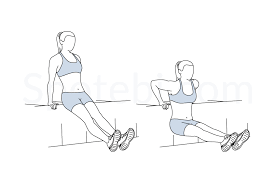
- Triceps dip: This exercise targets the triceps brachii muscle and can be done with parallel bars or a sturdy chair. Position yourself between the directional strips or place your hands on the edge of the seat with your fingers pointing forward. Extend your legs straight out in front of you and lift your body off the floor or chair, supporting your weight with your arms. When your upper arms are parallel to the ground, gradually lower your body by bending your elbows. By extending your elbows, you may force yourself back to the beginning position. Repeat as often as you like.
- Upper Triceps Stretch: This exercise focuses on the triceps of the upper arm and can be done with dumbbells or a resistance band. With your feet shoulder-width apart, either stand or sit. Hold a dumbbell with both hands or grab an overhead resistance band with elbows bent and pointing forward. Slowly extend your elbows and lift the weight or bar overhead. Lower the weight or strap behind your head, bending your elbows. To go back to where you were, extend your elbows. Repeat as often as you like.
- Skull Crushers: Skull crushers target the deltoid muscle and can be done with dumbbells or an EZ bar. Lie on a bench, hold a barbell with two hands, or hold an EZ bar with an overhand grip. Extend your arms over your chest, palms facing inward. Bend your elbows as you slowly lower the weights to your forehead. Lift the weights back to the starting position by extending your elbows. Repeat as often as you like.
- Close-Grip Bench Press: The close-grip bench press emphasizes the triceps of the upper arm and can be performed with a barbell or dumbbell. Lie on a bench and hold a barbell with a grip narrower than shoulder-width apart, or hold dumbbells with your palms facing each other. Keeping your elbows close to your body, lower the weight to your chest. Push the weight back up, extending your elbows until your arms are straight. Repeat as often as you like. Be sure to use appropriate weights or resistance levels, maintain proper form, and gradually increase intensity or resistance as you build strength. If you have specific concerns or limitations, contact a sports professional or healthcare provider for guidance.
Special test for elbow extension
There are no specific tests designed to evaluate only one elbow extension. However, there are certain specialized tests that can indirectly assess the function and integrity of structures involved in elbow extension. These tests are often used in clinical trials to diagnose various elbow conditions or injuries. here are some samples:
- Cozen Test (Resisted Wrist Extension Test): This test is used to assess the integrity of the joint extensor and lateral epicondylitis or tennis elbow.
- The subject is seated, forearm on the table and elbow at a 90-degree angle. The examiner stabilizes the person’s forearm and prevents their attempt to extend the wrist by keeping the elbow stable. Pain or discomfort in the lateral epicondyle when counter-extending the wrist suggests lateral epicondylitis.
- Maudsley Test (Resisted Middle Finger Extension Test): This test is also used to evaluate lateral epicondylitis or “tennis elbow”.
- The subject is seated, forearm on the table and elbow at a 90-degree angle. The examiner stabilizes the person’s forearm and prevents their attempt to extend the middle finger by holding the wrist in a neutral position. Pain or discomfort in the lateral epicondyle during restrained extension of the middle finger suggests lateral epicondylitis.
- Mills test (passive elbow extension test): This test is used to evaluate posterior or olecranon impaction. The subject is seated, the shoulder is abducted and the elbow is bent to 90 degrees. The examiner grasps the person’s distal forearm and applies a posterior force to the forearm, keeping the elbow at 90 degrees of flexion. Pain or discomfort at the back of the elbow indicates a rear collision.
- Tinel’s test: Although not specific for elbow extension, Tinel’s test can help assess nerve damage, such as irritation or compression of the ulnar nerve. The subject sits with the forearm on the table and the elbow slightly bent. The examiner taps lightly over the ulnar nerve in the medial aspect of the elbow. Pinching or electric shock-like sensations in the distribution of the ulnar nerve may indicate entrapment or irritation of the ulnar nerve. It is important to note that these tests must be performed by trained health professionals who can correctly interpret the results in the context of a person’s symptoms, history, and clinical picture. Special examinations are usually part of a comprehensive evaluation along with other physical examinations, medical history, imaging studies (if necessary), and professional expertise to arrive at an accurate diagnosis and develop an appropriate treatment plan.
Other Movement
These two movements work together to perform various tasks. For example, when you lift a glass of water to drink, the biceps brachii, and brachialis contract during elbow flexion to bring your hand closer to your mouth. Then, during elbow extension, the triceps brachii contracts to straighten your arm and bring the glass back down.
It’s worth noting that the elbow joint also allows for other movements, such as pronation (rotating the forearm inward) and supination (rotating the forearm outward). However, elbow flexion and extension specifically refer to the bending and straightening motions at the joint.
Summary
Elbow flexion and extension are the movements that occur at the elbow joint. Elbow flexion involves decreasing the angle between the forearm and the upper arm, bringing the hand closer to the shoulder. This movement is performed by the biceps brachii and brachialis muscles.
Elbow extension, on the other hand, increases the angle between the forearm and the upper arm, straightening the arm. The triceps brachii muscle is primarily responsible for elbow extension. These movements are crucial for activities that involve reaching, lifting, and throwing.
FAQs
Elbow flexion is the term for when your forearm bends at the elbow and goes towards your body. Elbow extension is the opposing motion.
The forearm moves at the elbow joint during motions at the elbow joint. The angle between the forearm and the arm at the elbow joint is reduced as the forearm is flexed. During extension, the angle between the arm and forearm is widened.
The brachialis
An essential forearm flexor at the elbow is the brachialis. The brachialis is regarded as a “pure flexor” of the forearm at the elbow and provides flexion of the elbow in all physiological situations. It is deeper than the biceps brachialis muscle and is located in the anteroinferior region of the arm.
The brachialis
An essential forearm flexor at the elbow is the brachialis. The brachialis is regarded as a “pure flexor” of the forearm at the elbow and provides flexion of the elbow in all physiological situations. It is deeper than the arm’s anteroinferior region and is located there.
Triceps brachii
The triceps brachii is a large, thick muscle located on the dorsal side of the upper arm. It often assumes the shape of a horseshoe on the back of the arm. The extension of the elbow joint is the triceps’ main purpose.

